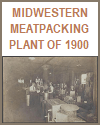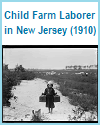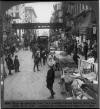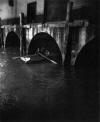Unit IX: Discontent and Reform |
| www.studenthandouts.com > U.S. History > Discontent and Reform > Maps and Pictures |
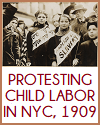 | 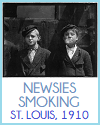 | 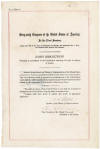 | ||||||||
| Child Labor Protest in New York City, 1909 | Smoking Newsboys (1910) | Nineteenth Amendment (1920) |
|
Maps and pictures can be valuable visual aids for American History students studying the Progressive Era. They enhance the learning experience by providing context, illustrating key events, and helping students make connections.
Geographic Context: Maps can show the locations of significant events, reform movements, and regions affected by social and political changes during the Progressive Era. Students can better understand the geographical spread of these developments. Visualizing Reform Movements: Pictures can depict the conditions that reformers sought to change. For example, images of tenement housing, child labor, and unsanitary meatpacking facilities help students grasp the need for social reforms. Political Cartoons: Political cartoons from the era can provide insights into the political debates and issues of the time. Analyzing cartoons helps students understand the perspectives of different groups and the role of humor in conveying political messages. Portraits of Key Figures: Portraits of important figures like Theodore Roosevelt, Woodrow Wilson, Susan B. Anthony, and Ida B. Wells introduce students to the individuals who shaped the era's history. Before and After: comparing "before and after" photos can illustrate the impact of reforms. For instance, images of polluted rivers before regulation and clean rivers after environmental conservation efforts show the tangible outcomes of Progressive Era reforms. Urbanization and Industrialization: Maps and pictures can depict the growth of cities, industrial centers, and the living conditions of urban populations. This visual context is essential for understanding the challenges faced by urban reformers. Struggles and Achievements: Pictures can portray the struggles faced by various groups, such as women and African Americans seeking civil rights, as well as their achievements in the form of suffrage and civil rights legislation. Changes in Technology: Images of innovations and technological advancements of the era, such as the assembly line, early automobiles, and telephones, help students grasp the technological changes that influenced society. Environmental Preservation: Pictures of national parks, pristine wilderness, and conservation efforts highlight the importance of environmental preservation during this period. Propaganda and Political Campaigns: Visual materials from political campaigns and propaganda posters can provide insights into the messaging and strategies used by political candidates and movements. By incorporating maps and pictures into their study of the Progressive Era, students can engage with the historical period on a more personal and visual level, enhancing their understanding and appreciation of the era's significance and its impact on American society. |
| www.studenthandouts.com > U.S. History > Discontent and Reform > Maps and Pictures |



